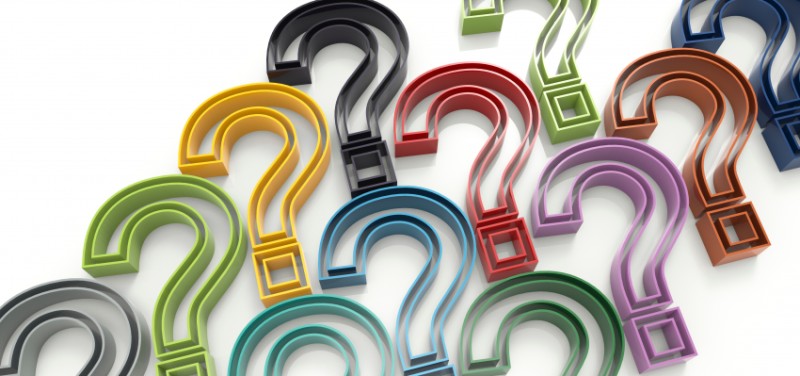In recent years, customer experience (CX) has emerged as one of the leading competitive differentiators across industries. Companies understand that CX breeds loyalty and retention.
Forrester Research’s report, Does Customer Experience Really Drive Business Success?, emphasizes that, when companies offer significantly differentiated customer experiences, consumers are more compelled to switch or stay, while those who provide poor
CX demonstrate reasons to defect. Therefore, leaders are eager to improve upon their current CX offerings, and laggards are motivated to catch up to (and possibly surpass) their competition. But, how should these brands go about bringing their CX strategy to the next level in an effort to further loyalty and retention?
Here, we speak with industry analysts to explore the present state of CX and how companies can sustain momentum as the space evolves.
Customer Strategist: What is the state of customer experience strategy today? Is it a primary differentiator for a brand?
Bruce Temkin: I’m not sure it’s the primary differentiator. It’s a critical component, but companies still must have a clear picture of their target customer and value proposition. Our data shows that customer expectations are rising faster than most companies’ ability to improve their customer experience. This creates an experience desire gap, allowing companies to step in and grab more business if they can improve the customer experience. And as customers become more aware of the experiences that they want, they will expect all of the companies they work with to meet their needs. This puts all companies on notice, because they are being compared against industry leaders such as Amazon and USAA, not just against their industry peers.
Ray Wang: Today customers are buying experiences and outcomes. They are going deeper and responding to their perception of a brand’s promise. Customer experience is key to delivering on the brand promise.
Jeanne Bliss: In this world of social media, companies must now ‘earn the right’ to business growth by delivering an experience that customers want to have again and tell others about. This means that the brand has to ‘prove’ its messaging and brand attributes on a consistent basis with customers, through their interactions with customers. The experience delivered to customers IS the brand, and that is what they message to the world on social media forums and with friends and colleagues.
Ed Thompson: Customer experience has led to increased access to information for customers empowering them in selecting, buying, and using products and services. It has led, as well, to reductions over time of other forms of differentiation, such as lower cost sourcing and product innovation. It means company and brand reputations are being built in a more transparent environment where all parts of the organization can make or break that reputation, so the weakest link becomes the most important.
CS: What attributes define companies that lead the way with CX strategy? What qualities define laggards?

JB: Companies that are differentiated start with customers’ lives and what customers are trying to accomplish to guide how they will and will not grow. Customer emotions, needs, and objectives drive how leaders communicate, how they drive accountability, and how they unite their actions. These companies enable their employees to deliver value.
Customer experience laggards continue to drive price differentiation as a strategy and cost containment in many instances. The silos lead the agendas often, and as a result a separate and random experience is delivered to customers, which gets in the way of the customer feeling valued. The silos are working hard, but they are working hard separately. Without the perspective of a comprehensive understanding of customer needs and uniting efforts, companies stay on the same course to drive quarterly sales numbers, without necessarily developing a deep understanding of the customer experience that drives the ongoing growth or loss of the customer relationship and customer asset.
BT: Our research has identified four characteristics that separate customer experience leaders from laggards: Purposeful Leadership, Compelling Brand Values, Employee Engagement, and Customer Connectedness. Leaders operate more consistently with a clear and compelling set of values and vision for the future, their brand promises more explicitly guide how they treat customers, their employees are more committed to the success of the organization, and they more actively use insights about customers to drive decisions across their organizations.
RW: [Leaders] begin with understanding the brand promise. From there, they work to make sure every touchpoint and anticipated touchpoint delivers on the brand promise. Laggards fail to deliver the basic requirements on customer journeys, and of course the anticipated intention-driven requirements.
ET: Numerous factors define CX leadership: Strong leadership with backing by the operating committee; patience by executives over four or five years; close coordination of activities across the whole organization; tracking of all programs to improve CX regardless of department; effective measurement programs that look widely at a variety of CX metrics across quality, satisfaction, loyalty, and advocacy; and employee engagement programs to alter behavior and focus on measuring and building trust between departments and functions.
Laggards, on the other hand, are defined by: Poor leadership with no backing by the operating committee; impatience by executives; limited or no coordination of activities across the whole organization; no tracking of all programs to improve CX regardless of department; ineffective measurement programs that look widely at a variety of CX metrics across quality, satisfaction, loyalty, and advocacy; no employee engagement programs to alter behavior and no focus on measuring and building trust between departments and functions.
CS: How can laggards catch up to leaders? Which CX improvements are critical to the success of such an overhaul?
RW: Start by understanding the target persons of the audience. Study how they behave and what their requirements are. Keep seeking out what are the unmet problems these persons encounter. Compare the results to how existing capabilities are delivered. The gap is the opportunity.
JB: Start with honoring customers as the asset of the business. Unite leaders to care about the human lives—the customers coming in and exiting your business. Unite leaders in common definition and language in fearlessly discussing this one irrefutable outcome of the overall experience delivered by your company: Did your customer asset grow or shrink in the past month or quarter or year? Then, embed the empathy and caring with leaders to care about the “why?” Connect the dots between the reasons driving customers away and the actions and the ROI for leading customer experience improvement.
BT: Customer experience is a reflection of an organization’s culture and operating processes. So any overhaul of customer experience needs to start internally. Customer experience laggards need to have a clear commitment to becoming more customer centric at senior levels, or any attempt at transformation will fall short.
CS: How can the element of surprise delight consumers and strengthen loyalty? Are consumers more likely to become advocates if they encounter CX when and where they least expect it?
JB: Surprise is great, if it is delivered as an addition to a regular, reliable, and consistent experience that delivers on customer needs and provides peace of mind. In organizations (which are few) where the experience is reliable, these “moments” of special experiences can breed memories that drive loyalty. But I am a huge advocate of instead first innovating on breeding moments of peace of mind. These will bring your customers the same type of joy and memories—and will earn word of mouth.
RW: The key is to surprise without creepiness. So the surprise should fall in line with what consumers are anticipating. There are good surprises and there are bad surprises. Your knowledge of the customers’ preferences over time can help you find the good surprises.
ET: Delighting customers is overrated. It’s hard to sustain because customers’ expectations reset upwards quickly and, in most cases, the customers biggest demand is that the core product or service quality lives up to promises. Therefore, consistency of delivery and meeting requirements for all matters more. Exceeding expectations is more important and may be about turning around a mistake more than about delighting. Customers become advocates over time when the organization is trustworthy and follows the golden rule consistently of treating others as you would wish to be treated. If expectations are exceeded, too, then that increases the odds they will become an advocate. The best chance of exceeding expectations is when a customer is under stress or there has been a failure that can be rectified quickly.
BT: Surprise and delight is great, but it will only have a lasting effect on customers if companies also consistently meet their basic needs. It doesn’t do any good to try and surprise a customer if you’re likely to let them down on the next interaction. The key is to understand what customers are really trying to accomplish and help them do that. Think about any interaction as part of a customer’s broader journey. If you can help them get what they want, instead of just trying to surprise them, then you can build real loyalty.
CS: What strategic CX innovations can we expect to see in the near future? How will these changes impact how consumers engage with their favorite brands?
JB: The importance in this stage of customer experience is for companies to not think of this work as a program, or ‘one and done.’ The innovation will be, quite frankly, for companies to stay the course this time around and embed customer experience as a competency in their business.
RW: The innovations we see will be how organizations deliver on continuity of experience and channel ubiquity. The ability to succeed on this mass personalization at scale will differentiate the winners and the losers.
ET: There are hundreds of innovations per year in improvements in customer experiences worldwide. What’s important for most organizations is to keep an eye on what others have done to innovate: a) in their industry and geography; b) in other geographies in the same industry; and c) then looking at other industries, as many ideas can be replicated without coming up with entirely unique innovations. Those who already provide great experiences tend to be willing to innovate the most, as with Disney Magic bands or Lego Club.
These changes, however, depend on the type of innovation. If the innovation improves personalization, modifies employee behavior, enables better feedback from customers, improves the ability for the organization to act as one, redefines processes from the outside in, improves openness, or designs the experience in a better way, then consumers and business customers will be able and want to engage more.
BT: There are several trends that are creating the opportunity for more CX innovations. The rise of mobile devices will continue to allow companies to redesign their interactions with customers in new ways. Yes, lots of companies already have mobile sites and mobile apps, but that’s not a real innovation. Companies will more radically rethink how they interact with customers and how they design their products and services. To get a sense of this, all you have to do is look at how Uber has changed the taxi experience.

















